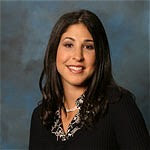The game of golf is deceptively rigorous. There are an estimated 30 million Americans who play golf. An individual playing 18 holes will take anywhere from 70-150 swings of the club. This is in addition to 50-100 swings each session at the practice range. While each individual swing may last only a second, the golfer can generate a club head speed of 80-100MPH. This is quite a collision to take place with such frequency. In a review done by Calloway and Jobe on the 1985-1986 PGA Season, 77% of all golfers sustained injuries. Of these, 42.4% were found at the base of the spine between the hips, and 43.8% at the lower back. Even players like Tiger Woods and Phil Mickelson have at one time been on the tender back list. If these pro athletes are commonly sustaining back injuries, it would seem likely that the recreational golf practitioner's chances would be much higher.
The Golf swing involves both moving and non-moving postures. In the address, the golfer should bend his back about 45 degrees bent forward at the waist. Assume a rounded posture in the neck and lower back. Too much curvature in the neck and lower back will lead to decreased spinal rotation, thus limiting the club head speed. Poor shoulder and upper torso flexibility can cause limited backswing.
Here is the most important tip about your swing; unless you are incredibly flexible, take a short backswing. Power is not created with the backswing. The force in your swing is specifically generated in the conversion of energy at the backswing to the downswing. Make it quick. Another common mistake is a lateral shift or backward movement during the backswing and/or downswing. This is also a direct result of poor flexibility, specifically in the hips and trunk.
The most common injuries are a direct result of poor ergonomics and inflexibility. Stretching should be used in injury prevention. However, it will also markedly improve your game. Here are some useful techniques. Move your neck through all ranges of motion. Clasp your hands behind your head and try to move your elbows backwards and then forwards, attempting to touch. When standing, grab your foot and stretch your quadriceps. Rotate your spine. Bend over and touch your toes, stand upright and then slide one arm down the leg laterally bending as far as you can go. Lie on your back and grab your knees. In addition, focus your work out regiment on golf centered exercise. For example, do oblique crunches. Use a cable pulley to perform weighted downswings and back swings. Hold a medicine ball and rotate your spine with your arms slightly extended. Do lunges and hip abduction exercises.
Remember the keys to a good game are endurance and flexibility. Take these tips, train, and stretch specifically for the sport. In a matter of no time, your game will improve and, more importantly, your body will do the same!









